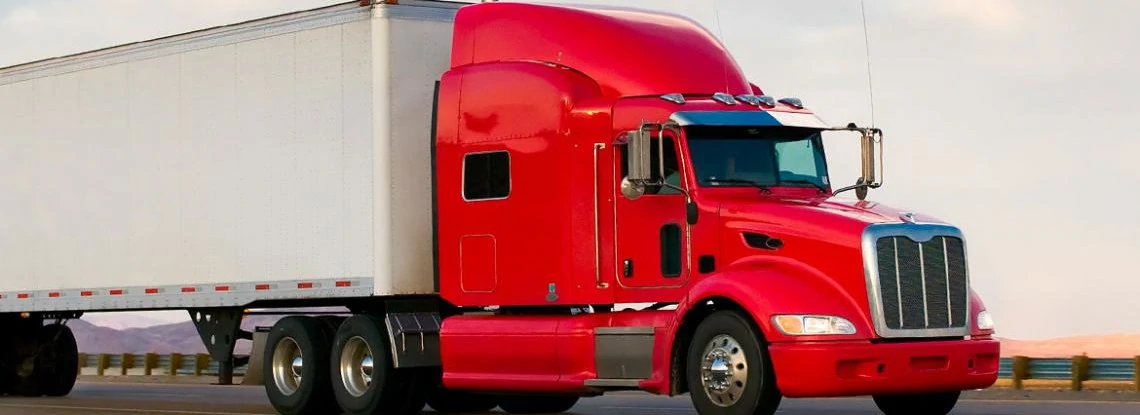Want to start your own trucking company? Here’s 5 important tips on how to start a trucking company in Canada from the motor carrier compliance experts at TransReport Services Inc.
Motor Carrier Setup
Before we can set-up your authority and obtain the necessary licenses and permits to ensure your fleets compliance, there are a few steps that you will need to take. The following steps should be considered before our compliance experts assist you with your fleet set-up.
Please be aware at TransReport Services we always advise our clients to seek legal advice before registering a business.
Step 1: Determine your business type
Now that you’ve made the decision to start your own trucking company you will need to decide which business structure best suits your needs. The applicable business types in Canada are:
Sole Proprietorship
With this type of entity you and your business are one and the same. You are responsible for all debts and obligations related to your business and all after tax profits would be yours alone to keep. As a sole owner of the business, a creditor can make a claim against your personal or business assets to pay off a debt. If you wish to operate under a name other than your own, you are required to register said business name.
Partnerships
A partnership is a good business structure if you want to carry on a business with a partner and you do not wish to incorporate your business. With a partnership, financial resources are combined and put into the business. As partners, you would share in the profits of your business according to the terms of your agreement.
Corporation
A corporation can be created at a provincial/territorial or federal level. When you incorporate a business, it is considered to be a legal entity that is distinct and separate from the owner(s)/shareholders. Directors of the corporation are responsible for ensuring that the business operates in a lawful manner. Shareholders are not personally liable for the debts, obligations or acts of the corporation.
For more information about the various business types as well as their corresponding advantages and disadvantages please visit https://www.bdc.ca/en/articles-tools/start-buy-business/start-business/pages/advantages-different-business-structures.aspx
Step 2: Register your business and business name
Now that you have determined the business type that best suits your needs, you will need to incorporate or register that business. You may be required to register with several different levels of government for a variety of different reasons and it is up to you to do your due diligence. The following link can be a helpful resource when determining your key registration requirements in Canada.http://www.canadabusiness.ca/eng/page/2730/
Once your business is incorporated or registered you may wish to select a business name (numbered company, proprietor etc.) Your business name must be registered if it differs from your entity’s legal name. Upon registering, you will receive a Business Name Registration. There are many factors that you should consider when selecting an appropriate business name, view the following link before making your name selection. http://www.canadabusiness.ca/eng/page/2729/
Step 3: Insure your fleet
Ensuring the availability of affordable liability and cargo insurance coverage prior to applying for authority, licenses and permits is critical. Be sure to select an agent or broker that is familiar with proof of coverage filings and related timelines to ensure prompt receipt of your authority where applicable.
Step 4: Determine the appropriate Fleet size
It is important to have a firm grasp of how you want to position your company during its initial stages. While you may have a goal of being the owner of a large fleet, you may be better off starting slowly and growing your fleet over time. You should consider the following when determining your starting fleet size:
Buying or Leasing a truck
There are many things to consider when obtaining a new truck or trucks for your fleet. A new fleet owner should carefully weigh the pros and cons of acquiring trucks for their fleet such as purchasing vs leasing, new vs used or whether to take on owner operators. A used vehicle purchase or lease may fit your budget however considerations such as warranty coverage, fuel efficiency and entire cost of ownership may tip the balance in favor of a new or newer vehicle.
Step 5: Regulatory Motor Carrier Compliance
Now that you’ve formed a business, have confirmed the availability of insurance coverage and have at least one commercial motor vehicle it’s time to acquire the proper authorities, licenses and permits and ensure you will be able to meet your regulatory compliance responsibilities. This is where our compliance experts thrive, we know exactly what you need in order to ensure your compliance and get you on the road quickly!
Want to benefit from over 25 years of trucking compliance expertise? Contact us today!
Bonus Step: PermiShare
Once your set up has been completed there is ongoing managament required to keep your growing fleet compliant. TransReport provides ongoing trucking compliance services to help our customers maintain compliance while focusing on other areas of their business. As an added bonus, our customers receive access to PermiShare, a secure web-based portal that enables your organization to bring your compliance data into one source while also modernizing your drivers access to their most important permits, licences and required documents.
PermiShare ensures your team always has access, from the back office to the highway via the PermiShare mobile app. Automated alerts ensure a company, driver or vehicle permit, registration or certification never lapses. Managing your fleets compliance responsibilities with PermiShare has never been easier! Get started today for as low as $15 a month.
Related Trucking Compliance: Truck Permits


